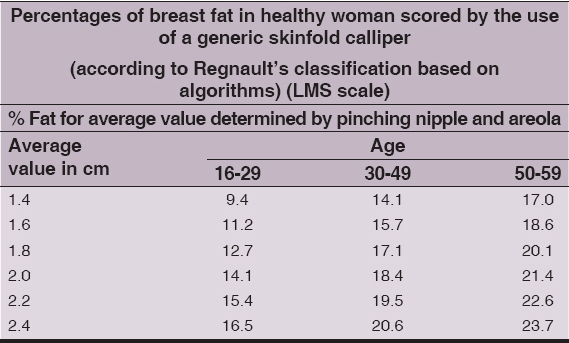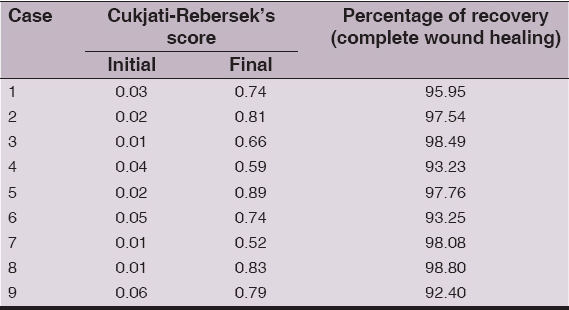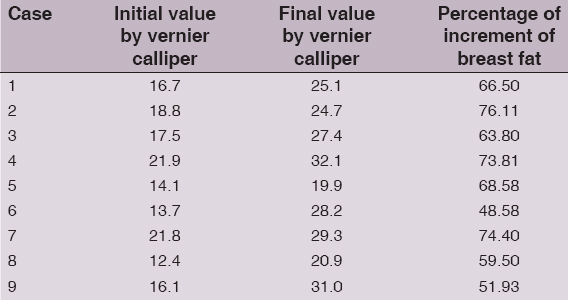Breast rhagades in nursing and non lactating women: A gordian knot to loose by the aid of a phytocosmetical formulation
Lorenzo Martini
University of Siena, Department of Pharmaceutical Biotechnologies, Via A. Moro 2, 53100 Siena, Italy
ABSTRACT
We have tried to solve an everlasting problem inherent the treatment of breast rhagades in woman, since mammary gland proposes several troubles: 1) drug penetration through the mammal areola epidermis is the quickest, after the one through eye conjunctive and so whichever chemical or natural substance (for instance triterpenes or cyanhydrin or amygdalin present in sweet almond oil) may be retrieved in human milk and blood after few minutes) 2) Milk is suckled by the bébé and it is supposed that whichever remedy against breast rhagades should be applied topically before and after each feeding and thus most of the substances included in the remedy passes into human milk. 3) Mammary gland is victim of the aggression of manifold germs and bacteria from the bébés’ mouth. There is an avalanche of cosmetic and pharmaceutical commodities that always fail in some of the aforesaid corollaries. Our gélée tends to comply all the prerequisites and we have demonstrated this hypothesis.
Key words: Breast density; Cukjati-Rebersek’s method; The Clock method; Paeonia albiflora root extract; Vernier calliper
INTRODUCTION
We are deeply persuaded that breast rhagades do not represent an exclusive burden of competence of obstetricians but may be studied and analysed even from a dermal cosmetological point of view. It is a matter of fact that breast rhagades whenever untreated may lead to infective mastitis and seldom to severe abscesses, fibrosing adenosis, idest the proliferation of myothelial and intralobular connective tissue, that is the chief responsible of the building up of the whole gland that constitutes breast itself. It is well documented that between 10% and 33% of breast-feeding women develop lactation mastitis [1,2], moreover that the incidence is highest in the first few weeks postpartum, decreasing gradually afterwards [3] and that however, abscesses and patent infective mastitis may occur as long as the woman is breast-feeding.
Rhagades are painful fissures of the nipple and areola, which appear after 2-3 days after delivery and are usually caused by incorrect nursing. They very often have an infective basis, causing the entry of germs that may cause mastitis (and too often they are bacteria deriving from the baby’s mouth entering the milk duct through a crack in the nipple) Obstetricians of all over the world suggest to prevent the occurrence of rhagades by always cleaning the nipple and areola carefully before and after feeding.
No specific drug treatments are available hitherto, in order to avoid the incidence of rhagades, and thus mastitis and finally fibroadenomas. It is suggestive to introduce that breast density is of relevant importance in dealing this concern:
Breast density is a measure used to describe the proportion of the different tissues that make up a woman’s breasts. Breasts are made up of fat and breast tissue (the milk ducts and lobules, which may be called glandular tissue). It is actually connective tissue which helps hold everything place. Breast density is not a measure of how the breasts feel, but rather how the breasts look on a mammogram. It compares the area of breast and connective tissue seen on a mammogram to the area of fat.
High breast density means there is a greater amount of breast and connective tissue compared to fat. Low breast density means there is a greater amount of fat compared to breast and connective tissue. The American College of Obstetricians and Gynecologists of New Jersey (5) draws the following classification:
Almost entirely fatty – 10% of women
Scattered areas of fibro-glandular density – 40% of women
Heterogeneously dense – 40% of women
Extremely dense -10% of women
Breast infections most commonly occur one to three months after the delivery of a baby, but they can occur in women who have not recently delivered as well as in women after menopause. In healthy women, mastitis is rare. However, women with diabetes, chronic illness or an impaired immune system may be more susceptible.
It has been referred too that Asian women are less prone to breast cancer, since their absolute area breast density (as Breast density is associated with breast cancer risk) is minor than that of White women and Black/African-American ones [4,5], anyway it is still unclear if Asian women are less prone to breast rhagades than White or Black ones.
And is this the principal intent of our study.
MATERIALS AND METHODS
We have recruited nine women, three Black/Africans, three Asians, three White/Europeans and we have had the fortunateness to dispose of three classes of subjects:
- (1,2,3) three women, one Asian, one White and one Black 54-59 years old, all three in menopause
- (4,5,6) three girls, one Asian, one White and one Black 27-32 years old, all three nursing
- (7,8,9) three girls, one Asian, one White and one Black 19-27 years old, which put out to nurse their babies and use to pull the milk with a breast pump 3-6 times a day.
Each of everyone is affected by severe nipple fissures and in two cases (2 and 9) by evident abscesses.
The cosmetic ingredients of the gélée we have prayed the individuals to spread 6 times a day for three weeks belong to the following botanical categories:
One anti-oedema herb: idest Paeonia albiflora root ethanol extract
Some essential oils endowed by carminative and anti-borborygmus functions: caraway, cumin, anis, meant, fennel oils [6].
One anti-inflammatory plant: Achillea millefolium (entire plant) tincture.
The gélée is made of magnesium stearate and ethanol.
The choice of the essential oils is due to the fact that the essential oils themselves are capable to perform digestive and carminative function when, once passed into human milk, this is suckled by the newborn, so that he has less probabilities of meteorism and diarrhetic phenomena.
Moreover, it must be asserted that Hippocrates of Chios used to advice nannies and puerperas to spread fennel oil onto their breast, since it acts as lactopoietic and lactogenic.
There is no evidence of any surreptitious toxic effect of Poenia albiflora root extract and/or Achillea millefolium tincture [7] on human organism, when ingested, indeed their flavour is gentle and appetizing, enev when passed into human milk for the bébé.
Diagnostic and analytical methods employed to determine the final recovery are the following:
-
α) The Cukjati-Rebersek’s method, that indicates the capacity of wound healing and expresses a dimensionless value obtained calculating the greatest average wound margin distance from the wound centre divided by the time in weeks necessary to the complete wound closure. The standard reference parameters, idest topical applications of emulsions of Neomycin sulphate or Hypericum perfoliatum oil, are for instance 0.062 after 4 weeks, 0.484 after 5 weeks and 0.900 after 6 weeks.
-
β) The Clock method, that indicates the Decrease of periareolar erythema and consists in employing acetate sheets (6X6 cm) to lay onto the area afflicted by the erythema and measuring across the surface by the aids of a fine-point transparent film-making pen from the 12:00 to the 06.00 position to the outer margin of the periwound erythema and then from the 03.00 to the 09.00 position and to the same outer margin and multiplying the values obtained.
The score is simply the result of the multiplication of the mathematical differences between the two distances in the two cases (idest the distance in cm from 12:00 to 06:00 and from 03:00 and 09:00).
Measurements are carried out every three days, and it is evident that the dimensionless score decreases and a significant plot can be drawn.
-
γ) Measurement with a vernier calliper that gives reason of the percentages of fat present in the gland, and scores are calculated by the Regnault’s algorythms. The values obtained do represent the nipple and surrounding areola elasticity obtained after the treatment.
In Table 1 it is possible to observe the range of standard values obtained by pinching with a regular vernier calliper the nipples and areolas of healthy girls and women, depending on the subject’s age, that indicate the percentage of fat in the entire gland, and the increments of percentage do show the elasticity reconvery of the nipple and areola of the individuals, subjects of our experimentation.
Ethics
This study was performed on human subjects; thus, all patients were aware of the presence of the study and they were fully informed about the drug and its side-effects.
RESULTS AND DISCUSSIONS
All the tables recorded below refer to the ameliorating of parameters during the three weeks of topical application of our gélée (Tables 2–4).
It is suggestive to notice that as far as the capacity of wound healing of the breast rhagades, the percentage of wound healing (the complete recovery during the three weeks of experiences) corresponds to the average value of 96.16%.
As far as the erythemal regression is concerned, it can be observed that a decrement of 32.90% is achieved.
The scoring of percentage of fat in the entire gland that is recovered by the use of the géléee is more complicated, since it must be considered that Case 1, 4 and 7 are represented by the Asian individuals that present a minor percentage of breast fat, when safe and healthy, and Case 3,6 and 9 correspond to the Black women that present the highest percentages of breast fat.
Notwithstanding all nine start from low values of breast fat, recorded at the very beginning of the experience, since rhagades compromise the breast density, the final scores demonstrate an elevate average increment of breast fat, even if it is not valuable (we deem) to declare the general increase, as every case is to be regarded as a single fact.
And, as announced in the introduction, the amount of the breast fat is synonym of elasticity recovery of the nipple and areola.
REFERENCES
1. Mastitis and breast abscess; NICE CKS, May 2010 (UK access only).
2. Jahanfar S, Ng CJ, Teng CL, Antibiotics for mastitis in breastfeeding womenCochrane Database Syst Rev 2009; 1: CD005458-
3. Dixon JM, Khan LR, Treatment of breast infectionBMJ 2011; 342: d396-
4. Chen Z, Wu AH, Gauderman WJ, Bernstein L, Ma H, Pike MC, Does Mammographic Density Reflect Ethnic Differences in Breast Cancer Incidence Rates?Am J of Epidemiology 2004; 159: 140-7.
5. 2015; June5-6Atlantic City, NY: Booklet of abstracts of The New Jersey Obstetrical and Gynecological Society 65th Annual Meeting, Tropiacana Casino and Resort;
6. Mukherjee PK, Evidence-Based Validation of Herbal Medicine 2015; Elsevier;
7. Anonym. Final report on the safety assessment of Yarrow (Achillea millefolium) Extract. Int J Toxicol 2001; 20: Suppl 279-84.
Notes
Source of Support: Nil,
Conflict of Interest: None declared.




Comments are closed.